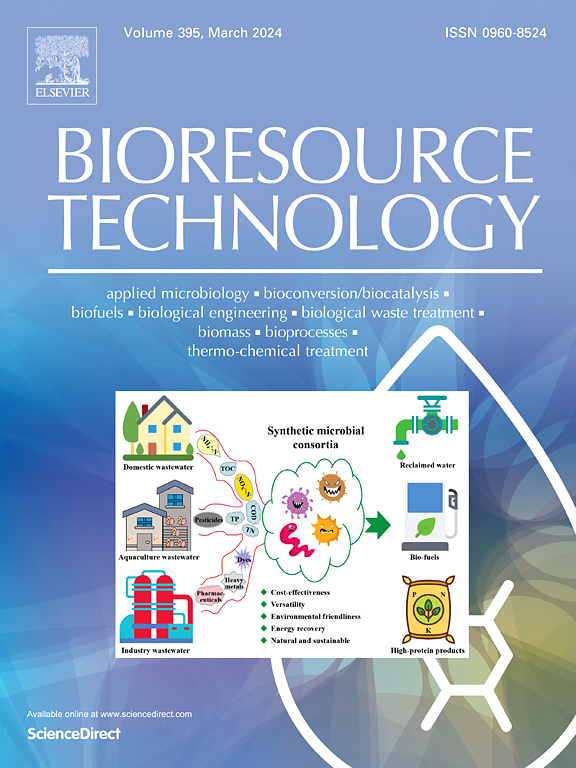Enhancement of caproate production via carboxylate chain elongation with sequential fermentation facilitated by biochar: A corn stover full-component utilization perspective
IF 9.7
1区 环境科学与生态学
Q1 AGRICULTURAL ENGINEERING
引用次数: 0
Abstract
In this study, caproate was synthesized from corn stover through sequential fermentation, and biochar was prepared from unhydrolyzable corn stover by pyrolysis to utilize full-component of corn stover. The results indicate that the caproate concentration in the unhydrolyzable corn stover biochar (UCSB) group was 2.2 times higher than that of the control group, and the fermentation start-up time was shortened by 18 days. Mechanistic analysis suggested that the rough surface of UCSB facilitated microbial colonization and reduced product inhibition. Genes expression analysis further demonstrated that UCSB significantly upregulated crucial functional genes responsible for ethanol oxidation and the reverse β-oxidation pathway, ultimately resulting in enhanced caproate production. The successful utilization of UCSB derived from unhydrolyzable solid residue effectively boosted fermentation, leading to a 37 % increase in the carbon utilization efficiency of corn stover. This study offering valuable insights for the high-value and full-component utilization of lignocellulosic biomass.

求助全文
约1分钟内获得全文
求助全文
来源期刊

Bioresource Technology
工程技术-能源与燃料
CiteScore
20.80
自引率
19.30%
发文量
2013
审稿时长
12 days
期刊介绍:
Bioresource Technology publishes original articles, review articles, case studies, and short communications covering the fundamentals, applications, and management of bioresource technology. The journal seeks to advance and disseminate knowledge across various areas related to biomass, biological waste treatment, bioenergy, biotransformations, bioresource systems analysis, and associated conversion or production technologies.
Topics include:
• Biofuels: liquid and gaseous biofuels production, modeling and economics
• Bioprocesses and bioproducts: biocatalysis and fermentations
• Biomass and feedstocks utilization: bioconversion of agro-industrial residues
• Environmental protection: biological waste treatment
• Thermochemical conversion of biomass: combustion, pyrolysis, gasification, catalysis.
 求助内容:
求助内容: 应助结果提醒方式:
应助结果提醒方式:


